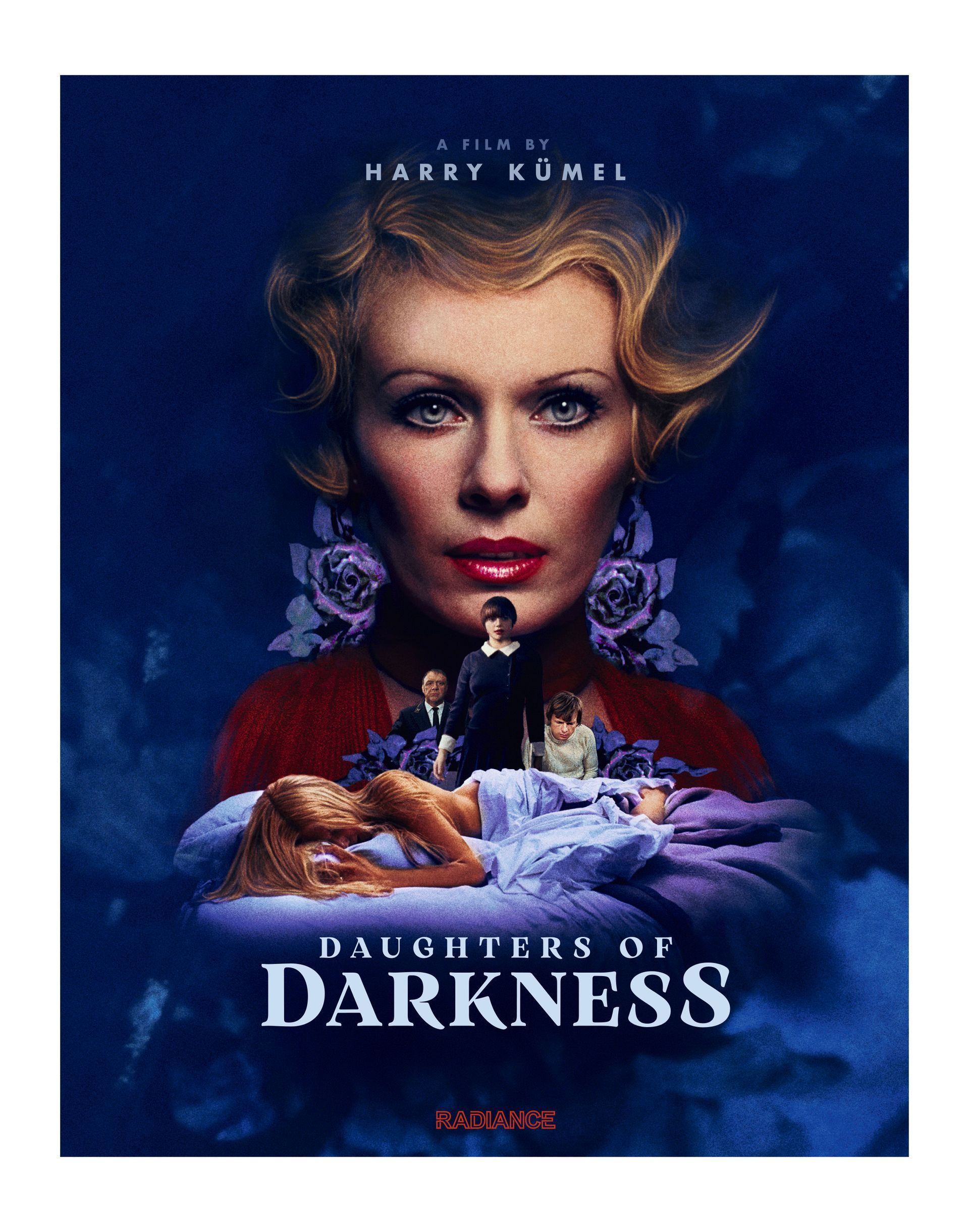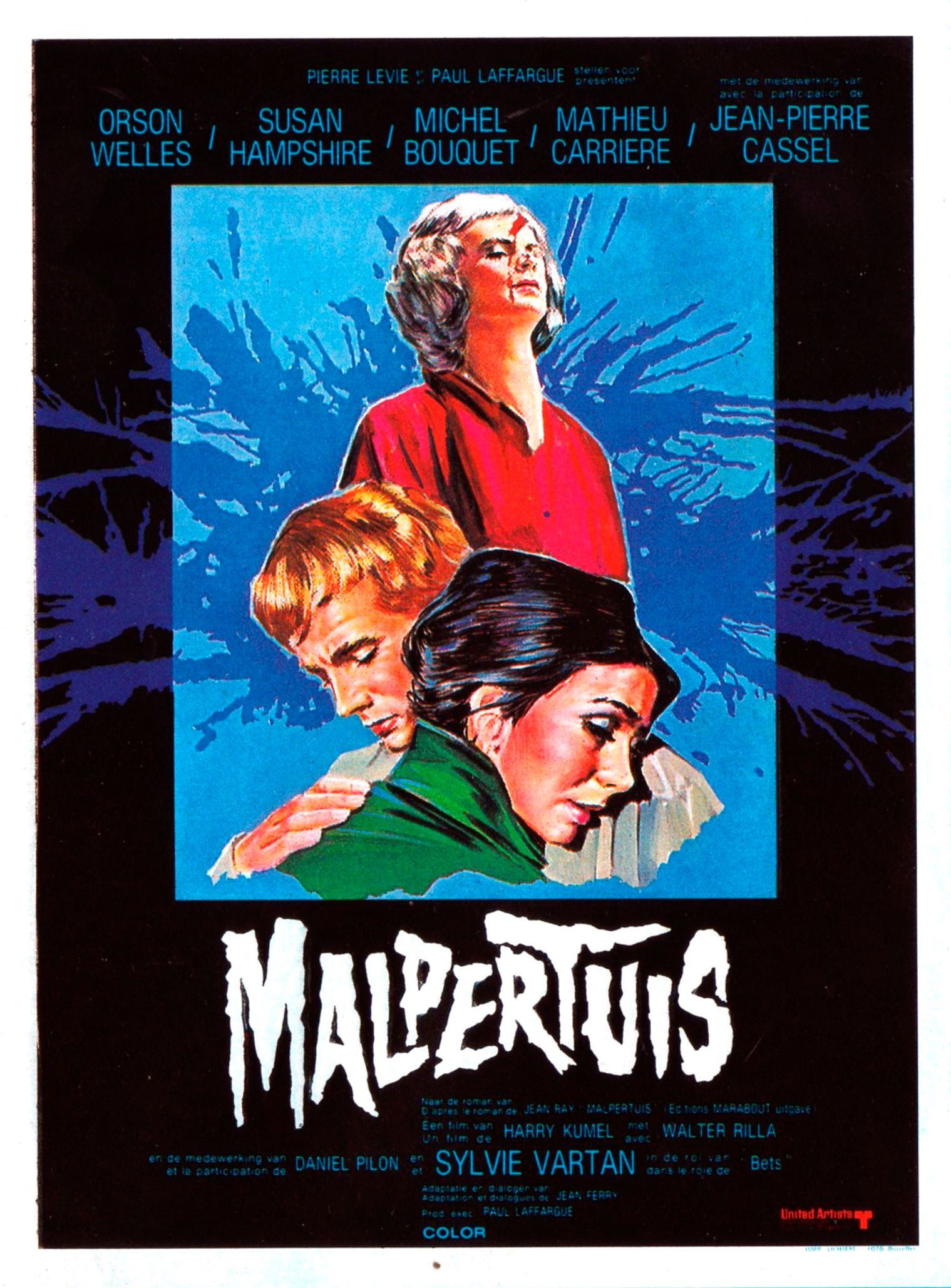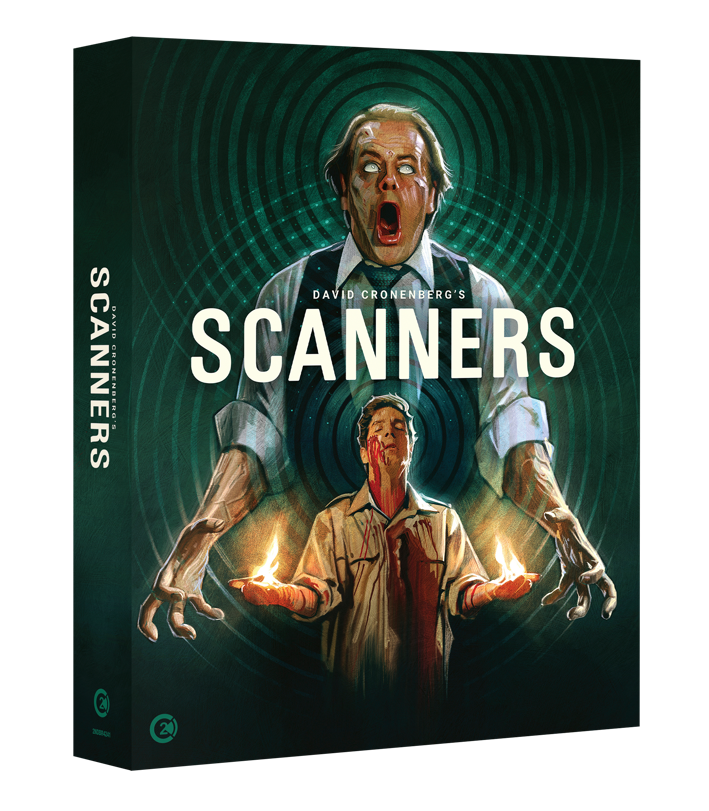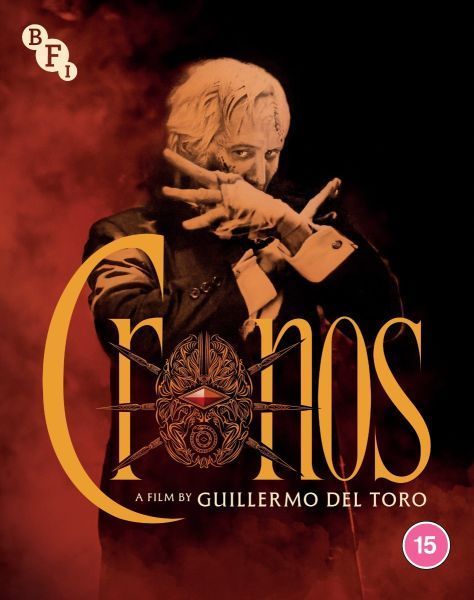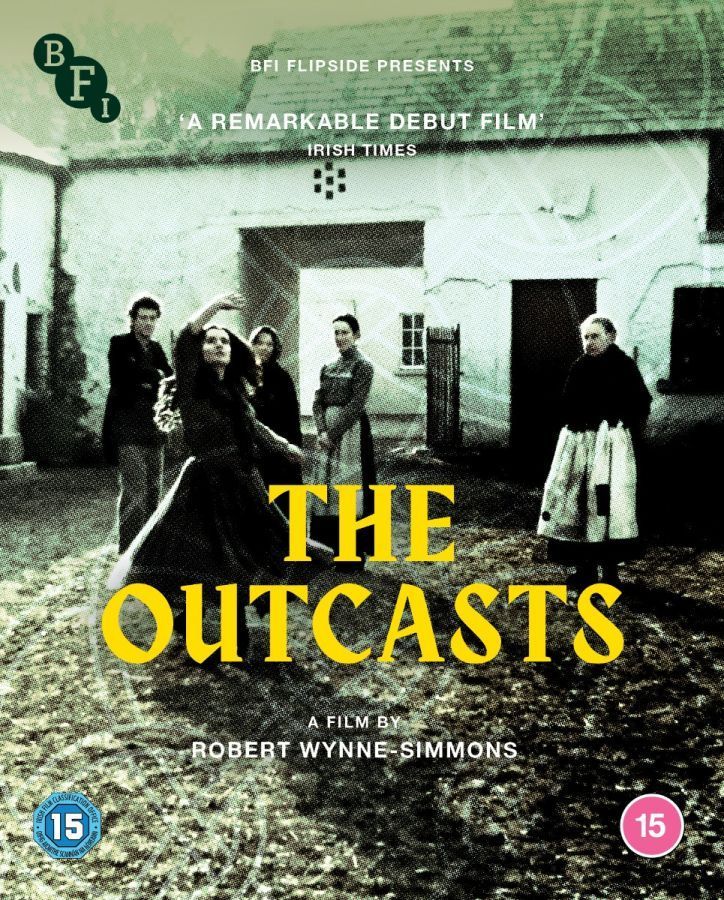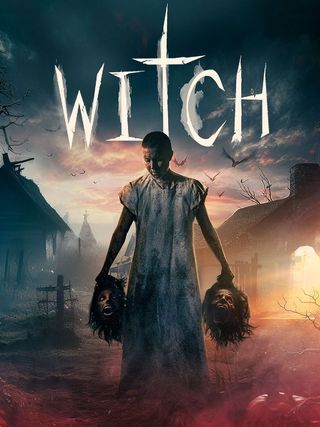The Strange World of Anthony Newley
The Strange World of Anthony Newley
The Strange World of Anthony Newley
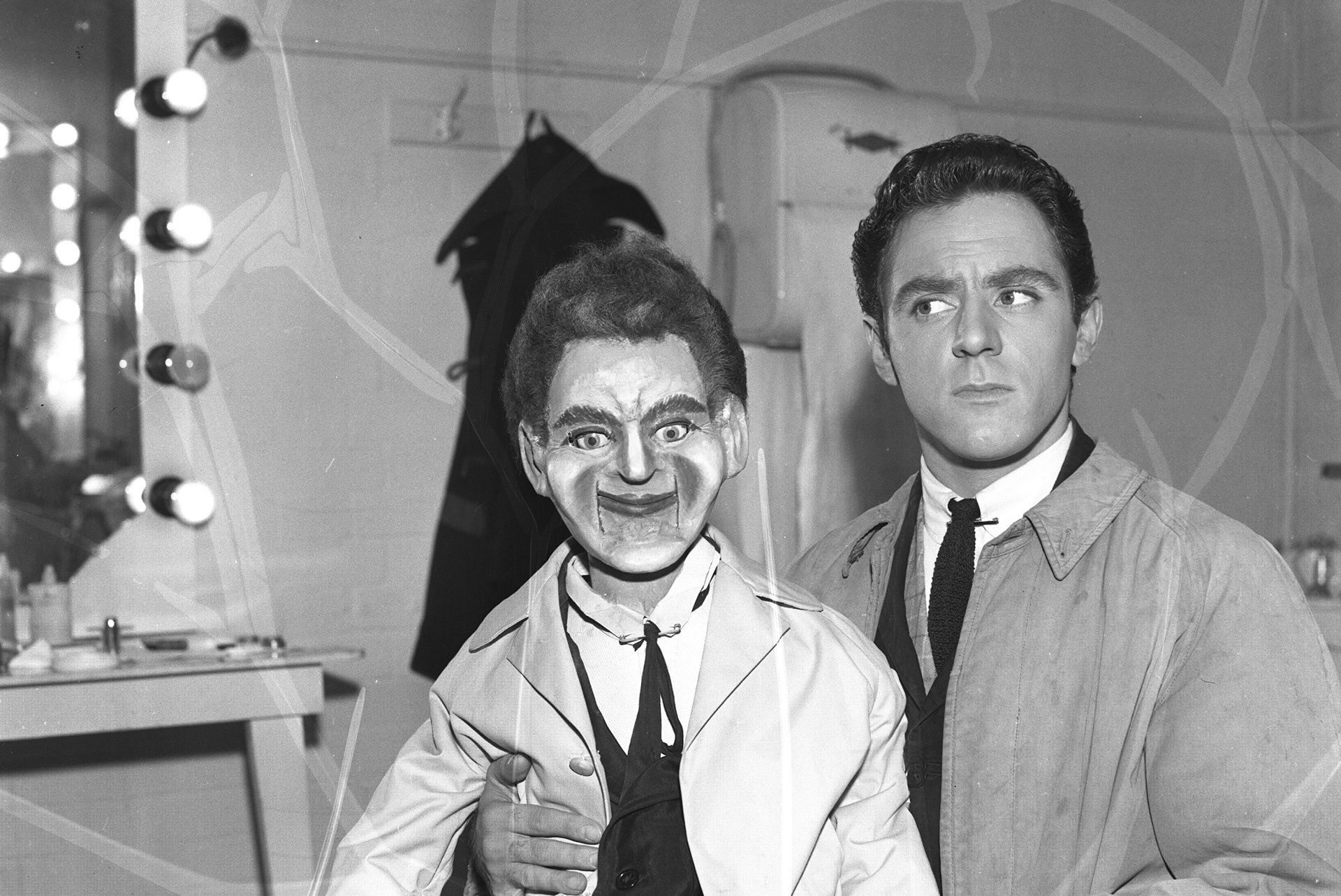
Anthony Newley Night NFT1 Thursday 30/4/09
As someone who, only a year or two ago, would have written off Anthony Newley as a light entertainer of little interest to the modern viewer, I felt a little embarrassed to be proven completely wrong about the man with the superb ‘Small World of Sammy Lee’. I can only blame my childhood memories of the inevitable ‘Junior Choice’ playing of ‘Pop Goes The Weasel’ & ‘Strawberry Fair’ for it all. I was obviously too young to have seen Newley in full mature entertainer mode, on adults’ TV.
After my damascene conversion to all things Newley, I was thrilled to hear that those top fellahs at The Flipside had organised a special Newley Night at London’s National Film Theatre, not only securing a print of ‘Will Hieronymous Merkin Ever Forget Mercy Humppe and Find True Happiness?’ but had also pulled in a grab-bag of stupendous clips from a wide range of his TV performances. A brief conversation with Vic Flipsider one afternoon, whet my appetite, with a mention of an episode of ‘Gurney Slade’ in the offing. He remained cruelly tight lipped about the rest.
A dash across the river to the South Bank’s NFT, a swift glass of Vin (Very) Ordinaire with my good lady, to shake off the foul day I’d had, and we were in the plush seats of the NFT‘s main screen.
First up, a few words from the delightful Tara Newley (Mother: Joan Collins, Father: Anthony Newley-talk about lucky genes!) who treated us to her memories of appearing in ‘Hieronymous Merkin’ as a child, along with her mother and brother, playing unwitting audience members to her father’s off the wall ideas. She gave us a vivid picture of the fun they had, in spite of the strain this exercise in over-the-top egotism must have placed on her parents’ already sinking marriage. Time scheduling was tight, so not time for a ‘Q&A’, but straight into the film.
I was already aware of this film from various books I have read about 60’s films (one or two!) and the cost to Newley’s wallet, time, marriage and reputation it represented, but had never actually seen it before. I don’t recall it ever being screened in recent years, not at the cinema, nor on TV, not even at the long-gone and much lamented Scala Cinema, nor made available on VHS or DVD anywhere. I therefore approached it with a sense of huge anticipation tempered with caution.
Those of you who are familiar with Newley’s way of working, the stories of his chaotic personal life, his magpie imagination and raging leonine drive for new ideas to bounce around, this film will prove to be everything you think it will be. Opening on a beautiful beach with an azure sea and sky, that could only be the Mediterranean, I was instantly reminded of ‘Help’, and the untrammelled stream of consciousness script it follows is not a million miles from that other off-kilter product of the magical 1960’s, The Monkees’ ‘Head’. Newley takes us, sometimes unwillingly, on a dark funhouse ride through his ailing psyche, dramatised and enlivened with stagecraft old and new, corny and sophisticated, funny and despondent, punctuated with song and dance numbers delivered sometimes by his good self, sometimes by his many friends in the performing arts. In a scene reminiscent of ‘The Knack’ a long line of girls wait at the waterside to enter his four-poster, each one discarded as he bores of them, only to take on the temporary services of the next. Newley once emphatically denied that this tour of his neurotic, self-doubting, self-loving dilemma was autobiographical, but later admitted it was completely so.
In spite of the egomaniac nature of the script, this is not a one-hander. Instead, Newley is aided and abetted by a roll-call of accomplices, such as Milton Berle as his ‘manager’ Good Time Eddie Filth, George Jessel as a wise-cracking ghostly presence, a bevy of beauties with campy names like ‘Trampolina Whambang’ and ‘Miss Maidenhair Fern’. His audience in all this is his wife ‘Polyester Poontang’ (played by real-life wife Joan Collins) and his children Tara and Sacha, the latter two kept in check by the ever-welcome Patricia Hayes as ‘granny’.
Merkin/Newley’s early life in show business is illustrated by familiar routines, but with Newley’s totally original songs. Bruce Forsyth in particular puts up a terrific performance that reminds us how he got where he is today, and how he’s managed to stay there all these years. We pass on quickly to Merkin/Newley’s pathological bed hopping in some truly hilarious vignettes. The casting must have been the most fun anyone had had since VE Day. It is not difficult to guess how quickly all this salacious lunacy must have destroyed what little was left of the Newley/Collins marriage, and I’m sure I wasn’t the only one in the audience who thought that Polyester Poontang’s bitterness at Merkin’s oversexed antics was produced from memory, rather than from Collins’ acting skills.
The Mercy Humppe of the title is a tall, blonde nymphet type who initially obsesses Merkin, but who fails to live up to his expectations and our ‘hero’ has to face the fact that he is fated to be alone and unhappy. He sings a ‘Poor Me’ showstopper that actually provoked criticism from an American Church minister for its attitude toward the almighty.
I could rerun every scene of note, (and there are many, including a ‘Zodiac’ dance that could only have been made in the 1960’s), or reel off the names of all the other distinguished actors who took part in this monument to Newley’s hubris, but I’m going to let it rest. ‘Merkin’ is a true product of that now-distant but still remembered and loved decade, of Newley’s febrile imagination, and of his worsening self inflicted mental state. It left me with the feeling that Newley could have saved himself a great deal of money by simply seeing a psychiatrist-but thank heaven he didn’t.
Only a short break later, we were back in our seats for the second part of tonight’s celebration of this unique talent, and what to me would be the real deal of the evening. In 1960, Newley, already a star of the stage, made a very offbeat comedy series for TV, ‘The Strange World of Gurney Slade’. Perhaps picking up on the meandering style of many an episode of shows like ‘Hancock’, the show could not be said to have ‘centred’ on any one idea, unless it was the eccentric musings and ramblings of the show’s main character. Only six episodes were made, and the show was so deeply unpopular, (no belly laughs, and significantly, no laughter track) that it was shunted from primetime to the graveyard slot early on. This, the fourth episode, has our hero Gurney Slade, on trial for having no sense of humour; he’s made a TV comedy show that isn’t funny. Eerily reminiscent of ‘The Prisoner’, which it predated by several years, Slade/Newley, puts up a spirited defence to this heinous charge, attempting to prove that countersunk screws are indeed funny, but to no avail. He is sentenced to death, only reprieved when the executioner’s axe-head falls off, which the judge finds uncontrollably funny. How I would love to have been a fly on the wall in the house of Mr & Mrs Average TV Viewer (who appear as prosecution witnesses) when this went out.
What followed was a superb and beautifully preserved colour clip from Burt Bacharach & Associates (1972), which showed off Newley’s singular talents to maximum effect. A truly hilarious routine for ‘Those Were The Good Old Bad Old Days’, ably supported by a young-ish dance troupe, followed by what may have been the high spot of the whole ‘BB&A’ series; a duet between Newley and the great Sammy Davis Junior. What a pleasure to see two consummate professionals at the height of their powers, playing off each other with their good natured jibes, tailor-made alternative lyrics to Newley’s best songs, and Sammy impersonating Newley to his face and getting away with it! It really was a joy to see and hear, and if this brilliant series doesn’t get a showing on TV or a really good DVD release, I will personally picket ITV’s studios.
An unusual artefact from 1977 was ‘The Beatles Forever’, a show made for the UK which I have no contemporary memory of, whatsoever. Basically an affectionate Beatles cover versions show, Newley duetting with Bernadette Peters (who played the lovable hat-maker in ‘Slaves of New York’), and also performing ‘Within You Without You’, in a 1970’s deco mock up of an Indian temple, with innumerable cast members contemplating the infinite, albeit through their ornate drinking glasses, looking less like mystics in their ecstasies, more like a bunch of jaded sybarites. A revue of The Beatles tunes seemed a very odd career diversion for Newley, given that the Fab Four had proved to be the nemesis of Newley and many entertainers like him.
We passed on to the battle of the blazers, as Newley mounted the banquette for a friendly tussle with Val Doonican. The ever affable Mr Doonican, resplendent in his monogrammed woollen (a stylised ‘Val’, not, I’m happy to report, what you were thinking) and Newley in an open necked shirt and plain navy affair, looking as if he’d wandered in from an afternoon on the Pimms & Lemonade at the Sloaney Pony. Very much a rush-through of his greatest hits, with Newley performing to Val’s appreciative remarks. The same show also offered the musical talents of Elkie Brooks, but sadly not in this clip. We had a lot to get through.
Time may have taken its inevitable toll on Newley, his voice losing a little of its power, but he was as sprightly as ever, racing up the steep staircase on The Bob Downe Show from 1996, to sing his hits unmolested by the very beige Mr. Downe. It was at this point that I noted Newley’s striking resemblance to Gordon Brown, right down to the hangdog expression our Prime Minister seems to have worn since taking office. Added contributions to Bob Downe’s show, mercifully absent here, came from Ant and Dec and Martine McCutcheon.
To close was a trip back to 1970, to hear Newley sing a selection of his best songs on ‘This is Tom Jones’, and he did not disappoint. On a set that resembled a particularly camp episode of Dr Who, Newley was at his crooning best.
Evenings like this do a lot to restore my faith in repertory cinema. Clips of Newley on modern day TV are rare as hens’ teeth, and video/DVD, almost unknown. Primarily a live performer, it is wholly possible that we do not have his best performances in any recorded format, but there is at least something out there, as this all too brief selection of clips and curios proved. It was a very welcome lifting of the curtain on a talent that passed away ten long years ago, to little fanfare. I recall an obituary in a major national newspaper which remembered Newley’s meteoric path to international stardom, his occupation of the honour of having once been one of the world’s highest paid entertainers, and then his equally rapid decline and complete disappearance from public notice. These clips prove that even if journalists have forgotten him, the public and the TV archivists have not. Fans of David Bowie are probably aware of the stylistic debt owed to Newley by their idol in his early years, where even Bowie’s song writing resembled the material being performed by Newley, and not just his stage cockney voice. Newley’s repeated use of the ‘puppet’ mime was also appropriated by Bowie, and others, in the otherwise chalk and cheese polarity of rock music and show tunes. Plenty of others have followed the theatrical template Newley himself followed, and for a real memory stretcher, does anyone else out there remember the Newleyisms of late 80’s rock act, Boys Wonder? Newley deserves a proper memorial to his over-reaching, if sometimes misguided, talent, and to reach the maximum number of people. I propose a TV retrospective, followed by a DVD release, would be the way to remind previous generations, and introduce later ones, to this formidable talent, who made a far greater impression on popular culture than most of us realised.
Scenester
The Small World of Sammy Lee
National Film Theatre 24/4/08
Those fellahs at The Flipside have done it again; they’ve tracked down a forgotten gem of British Cinema and who knows where this one has been hiding since it was made in 1962?
If you’re anything like me, the name Anthony Newley tends to conjure up a picture of a light entertainer who seemed to belong to the Victorian Music Hall tradition, more than the Swingin’ Age he became famous in. This film pays testament to his talent as an actor, and a damn good one at that.
The plot is a little hackneyed, that of a small-time comic who scratches a living introducing the strippers in a particularly grubby Soho night spot, who must pay a colossal gambling debt within a few hours or he’ll end up as a punchbag for a local villain’s henchman. His hapless attempts to raise the money are totally believeable and grimly hilarious.
Newley’s portrayal of Sammy ‘Lee’ Leeman is so matter of fact, you forget you’re watching a slice of exploitation cinema, and warm to him no matter what you think of his choice of profession or the places he exercises it in.
The opening shots of grimy Soho, in merciful black and white, at the start of another working day, set the scene brilliantly for what it to come. As market stall holders set up in Berwick Street, Sammy is losing a fortune in a cellar gambling club, the illumination coming from the morning sunlight through the luxcrete overhead. The street shots, sometimes done with a hidden camera, sometimes all too obviously a visible one, show sights familiar to anyone who spends a little time there each day, but not the present-day café and night club scene. This is the Soho of the early 60’s, with gambling and strip clubs only recently legalised, springing up like rank weeds everywhere. Every third doorway appears to be a strip club, the others being cafes (brief shots of The Heaven & Hell and The Two I’s being particular highlights) and foreign restaurants. Was that a young mod on his scooter? Maybe.
Sammy’s visit to his brother’s grocer’s shop (Lou, played by the ever—watchable Warren Mitchell) has some great Jewish London banter. Lou is of course fully aware of the reason for Sammy’s rare visit.
Lou: Five minutes you’ve been in my shop, you haven’t even asked me how’s business
Sammy: How’s business, Lou?
Lou: Don’t ask! Look at all the people who aren’t coming in to the shop, all the business I’m not getting.
The appearance of Lou’s wife, Milly, played with relish by Miriam Karlin, all haughty demeanour and glaring contempt for her dissolute brother-in-law, is enough to freeze the gherkins in their jars
Lou: I ask her, how many pairs of shoes do you need, you’ve only got one pair of feet!
Truly touching is Lou’s offer of all he has in the till of his failing business -£25/0/0. Sammy needs much more than this, and starts hustling for any business he can get-flogging drinking glasses to a club owner on account, using the profit to pay for cheap wristwatches, unloading them onto someone else, his petty errands being carried out by his ageing dresser, the irreplaceable Wilfrid Brambell. Sammy’s trip to a snooker hall to try and unload more junk onto one of Soho’s more successful villains, leads him into more profitable territory. Our immaculately turned out, and icy-cold crime lord is none other than Alfred Burke (from late 60’s, early 70’s TV’s Public Eye) who suggests a little dope transaction might be the thing to make a little money in a hurry. Something of a taboo subject at the time, this is handled particulary well by the filmmakers, and even manages to fit in a social exclusion/racial theme with Sammy’s visit to a cool Jazz Club to seek out a possible dope connection. Asking the black pianist who he should see about this matter, the musician spits out his contempt for Sammy’s assumption that because he’s black, he has all the criminal connections in the palm of his hand.
By the time we’re halfway through Sammy’s small world, we realise that the filmmakers must have known Soho inside out, what with the access to what appear to be real strip joints, clubs and people.
The appearance of Patsy (Julia Foster in an assured performance, despite her tender years) a girl from the north who seems to have taken Sammy’s offer of a job seriously and even innocently, is another cliché’d storyline that, in the hands of these actors, becomes something of surprising value. Her initiation into stripping is another reminder that this is no lightweight thriller or high-minded piece of cinema verite, but a masterly piece of exploitation, made on the hoof.
Sammy’s attempts to come up with the money he owes are all turning on paper-thin profits and when Wilfrid Brambell’s put-upon dresser returns from the last errand with a cheque instead of cash (Arthur Daley would have blanched at the sigh of it!) and only minutes to go, Sammy knows he is in for a beating. His speech to the assembled Strip Club habitués is as moving as it is scabrous:
‘Gentlemen, and I use that term loosely, we have in here one of Soho’s lowest, cheapest and downright shoddiest shows, and by the look of you lot, you deserve it.’
The last scene is so poignant and so pathetic, I am not going to spoil it for you by describing it. I am just going beg whoever owns this fantastic film, to get it out on video/DVD or TV by any means necessary, because it is a magnificent piece of work. The period detail alone was worth the price of the ticket, (yes, I was craning my neck to see if I could spot some jukeboxes with attendant mods) its position in that well-loved decade enough to get me south of the river on a cold April night to see it, but the quality of the acting was the real prize here, and from actors you would not normally see in a film of this type.
If I’ve made any readers green with envy, well, sorry about that, especially the ones who may live far from London’s NFT. I did spot a face here and there in the large crowd of interested parties. The rest of you – you missed one great film!
Scenester
27/4/08
I think it’s fair to say, that when people are remembering their favourite comedy shows from the 1950’s and 1960’s, thoughts turn to the ‘Goon Show’ ‘Hancock’ and ‘Steptoe and Son’ more readily than ‘Gurney Slade’. These three were of course among the most popular comedy shows in British Radio and TV history, whereas ‘Gurney Slade’ suffered an ignominious fate when it was shunted from its 8.30 slot to the graveyard shift after only two weeks, due to plummeting ratings. What was it that inspired the viewers to turn off in droves? It surely could not have been the hugely popular star, Anthony Newley, with his wealth of experience as a stage performer, pop singer and all-round entertainer.
Scenester
17/8/11
As someone who, only a year or two ago, would have written off Anthony Newley as a light entertainer of little interest to the modern viewer, I felt a little embarrassed to be proven completely wrong about the man with the superb ‘Small World of Sammy Lee’. I can only blame my childhood memories of the inevitable ‘Junior Choice’ playing of ‘Pop Goes The Weasel’ & ‘Strawberry Fair’ for it all. I was obviously too young to have seen Newley in full mature entertainer mode, on adults’ TV.
After my damascene conversion to all things Newley, I was thrilled to hear that those top fellahs at The Flipside had organised a special Newley Night at London’s National Film Theatre, not only securing a print of ‘Will Hieronymous Merkin Ever Forget Mercy Humppe and Find True Happiness?’ but had also pulled in a grab-bag of stupendous clips from a wide range of his TV performances. A brief conversation with Vic Flipsider one afternoon, whet my appetite, with a mention of an episode of ‘Gurney Slade’ in the offing. He remained cruelly tight lipped about the rest.
A dash across the river to the South Bank’s NFT, a swift glass of Vin (Very) Ordinaire with my good lady, to shake off the foul day I’d had, and we were in the plush seats of the NFT‘s main screen.
First up, a few words from the delightful Tara Newley (Mother: Joan Collins, Father: Anthony Newley-talk about lucky genes!) who treated us to her memories of appearing in ‘Hieronymous Merkin’ as a child, along with her mother and brother, playing unwitting audience members to her father’s off the wall ideas. She gave us a vivid picture of the fun they had, in spite of the strain this exercise in over-the-top egotism must have placed on her parents’ already sinking marriage. Time scheduling was tight, so not time for a ‘Q&A’, but straight into the film.
I was already aware of this film from various books I have read about 60’s films (one or two!) and the cost to Newley’s wallet, time, marriage and reputation it represented, but had never actually seen it before. I don’t recall it ever being screened in recent years, not at the cinema, nor on TV, not even at the long-gone and much lamented Scala Cinema, nor made available on VHS or DVD anywhere. I therefore approached it with a sense of huge anticipation tempered with caution.
Those of you who are familiar with Newley’s way of working, the stories of his chaotic personal life, his magpie imagination and raging leonine drive for new ideas to bounce around, this film will prove to be everything you think it will be. Opening on a beautiful beach with an azure sea and sky, that could only be the Mediterranean, I was instantly reminded of ‘Help’, and the untrammelled stream of consciousness script it follows is not a million miles from that other off-kilter product of the magical 1960’s, The Monkees’ ‘Head’. Newley takes us, sometimes unwillingly, on a dark funhouse ride through his ailing psyche, dramatised and enlivened with stagecraft old and new, corny and sophisticated, funny and despondent, punctuated with song and dance numbers delivered sometimes by his good self, sometimes by his many friends in the performing arts. In a scene reminiscent of ‘The Knack’ a long line of girls wait at the waterside to enter his four-poster, each one discarded as he bores of them, only to take on the temporary services of the next. Newley once emphatically denied that this tour of his neurotic, self-doubting, self-loving dilemma was autobiographical, but later admitted it was completely so.
In spite of the egomaniac nature of the script, this is not a one-hander. Instead, Newley is aided and abetted by a roll-call of accomplices, such as Milton Berle as his ‘manager’ Good Time Eddie Filth, George Jessel as a wise-cracking ghostly presence, a bevy of beauties with campy names like ‘Trampolina Whambang’ and ‘Miss Maidenhair Fern’. His audience in all this is his wife ‘Polyester Poontang’ (played by real-life wife Joan Collins) and his children Tara and Sacha, the latter two kept in check by the ever-welcome Patricia Hayes as ‘granny’.
Merkin/Newley’s early life in show business is illustrated by familiar routines, but with Newley’s totally original songs. Bruce Forsyth in particular puts up a terrific performance that reminds us how he got where he is today, and how he’s managed to stay there all these years. We pass on quickly to Merkin/Newley’s pathological bed hopping in some truly hilarious vignettes. The casting must have been the most fun anyone had had since VE Day. It is not difficult to guess how quickly all this salacious lunacy must have destroyed what little was left of the Newley/Collins marriage, and I’m sure I wasn’t the only one in the audience who thought that Polyester Poontang’s bitterness at Merkin’s oversexed antics was produced from memory, rather than from Collins’ acting skills.
The Mercy Humppe of the title is a tall, blonde nymphet type who initially obsesses Merkin, but who fails to live up to his expectations and our ‘hero’ has to face the fact that he is fated to be alone and unhappy. He sings a ‘Poor Me’ showstopper that actually provoked criticism from an American Church minister for its attitude toward the almighty.
I could rerun every scene of note, (and there are many, including a ‘Zodiac’ dance that could only have been made in the 1960’s), or reel off the names of all the other distinguished actors who took part in this monument to Newley’s hubris, but I’m going to let it rest. ‘Merkin’ is a true product of that now-distant but still remembered and loved decade, of Newley’s febrile imagination, and of his worsening self inflicted mental state. It left me with the feeling that Newley could have saved himself a great deal of money by simply seeing a psychiatrist-but thank heaven he didn’t.
Only a short break later, we were back in our seats for the second part of tonight’s celebration of this unique talent, and what to me would be the real deal of the evening. In 1960, Newley, already a star of the stage, made a very offbeat comedy series for TV, ‘The Strange World of Gurney Slade’. Perhaps picking up on the meandering style of many an episode of shows like ‘Hancock’, the show could not be said to have ‘centred’ on any one idea, unless it was the eccentric musings and ramblings of the show’s main character. Only six episodes were made, and the show was so deeply unpopular, (no belly laughs, and significantly, no laughter track) that it was shunted from primetime to the graveyard slot early on. This, the fourth episode, has our hero Gurney Slade, on trial for having no sense of humour; he’s made a TV comedy show that isn’t funny. Eerily reminiscent of ‘The Prisoner’, which it predated by several years, Slade/Newley, puts up a spirited defence to this heinous charge, attempting to prove that countersunk screws are indeed funny, but to no avail. He is sentenced to death, only reprieved when the executioner’s axe-head falls off, which the judge finds uncontrollably funny. How I would love to have been a fly on the wall in the house of Mr & Mrs Average TV Viewer (who appear as prosecution witnesses) when this went out.
What followed was a superb and beautifully preserved colour clip from Burt Bacharach & Associates (1972), which showed off Newley’s singular talents to maximum effect. A truly hilarious routine for ‘Those Were The Good Old Bad Old Days’, ably supported by a young-ish dance troupe, followed by what may have been the high spot of the whole ‘BB&A’ series; a duet between Newley and the great Sammy Davis Junior. What a pleasure to see two consummate professionals at the height of their powers, playing off each other with their good natured jibes, tailor-made alternative lyrics to Newley’s best songs, and Sammy impersonating Newley to his face and getting away with it! It really was a joy to see and hear, and if this brilliant series doesn’t get a showing on TV or a really good DVD release, I will personally picket ITV’s studios.
An unusual artefact from 1977 was ‘The Beatles Forever’, a show made for the UK which I have no contemporary memory of, whatsoever. Basically an affectionate Beatles cover versions show, Newley duetting with Bernadette Peters (who played the lovable hat-maker in ‘Slaves of New York’), and also performing ‘Within You Without You’, in a 1970’s deco mock up of an Indian temple, with innumerable cast members contemplating the infinite, albeit through their ornate drinking glasses, looking less like mystics in their ecstasies, more like a bunch of jaded sybarites. A revue of The Beatles tunes seemed a very odd career diversion for Newley, given that the Fab Four had proved to be the nemesis of Newley and many entertainers like him.
We passed on to the battle of the blazers, as Newley mounted the banquette for a friendly tussle with Val Doonican. The ever affable Mr Doonican, resplendent in his monogrammed woollen (a stylised ‘Val’, not, I’m happy to report, what you were thinking) and Newley in an open necked shirt and plain navy affair, looking as if he’d wandered in from an afternoon on the Pimms & Lemonade at the Sloaney Pony. Very much a rush-through of his greatest hits, with Newley performing to Val’s appreciative remarks. The same show also offered the musical talents of Elkie Brooks, but sadly not in this clip. We had a lot to get through.
Time may have taken its inevitable toll on Newley, his voice losing a little of its power, but he was as sprightly as ever, racing up the steep staircase on The Bob Downe Show from 1996, to sing his hits unmolested by the very beige Mr. Downe. It was at this point that I noted Newley’s striking resemblance to Gordon Brown, right down to the hangdog expression our Prime Minister seems to have worn since taking office. Added contributions to Bob Downe’s show, mercifully absent here, came from Ant and Dec and Martine McCutcheon.
To close was a trip back to 1970, to hear Newley sing a selection of his best songs on ‘This is Tom Jones’, and he did not disappoint. On a set that resembled a particularly camp episode of Dr Who, Newley was at his crooning best.
Evenings like this do a lot to restore my faith in repertory cinema. Clips of Newley on modern day TV are rare as hens’ teeth, and video/DVD, almost unknown. Primarily a live performer, it is wholly possible that we do not have his best performances in any recorded format, but there is at least something out there, as this all too brief selection of clips and curios proved. It was a very welcome lifting of the curtain on a talent that passed away ten long years ago, to little fanfare. I recall an obituary in a major national newspaper which remembered Newley’s meteoric path to international stardom, his occupation of the honour of having once been one of the world’s highest paid entertainers, and then his equally rapid decline and complete disappearance from public notice. These clips prove that even if journalists have forgotten him, the public and the TV archivists have not. Fans of David Bowie are probably aware of the stylistic debt owed to Newley by their idol in his early years, where even Bowie’s song writing resembled the material being performed by Newley, and not just his stage cockney voice. Newley’s repeated use of the ‘puppet’ mime was also appropriated by Bowie, and others, in the otherwise chalk and cheese polarity of rock music and show tunes. Plenty of others have followed the theatrical template Newley himself followed, and for a real memory stretcher, does anyone else out there remember the Newleyisms of late 80’s rock act, Boys Wonder? Newley deserves a proper memorial to his over-reaching, if sometimes misguided, talent, and to reach the maximum number of people. I propose a TV retrospective, followed by a DVD release, would be the way to remind previous generations, and introduce later ones, to this formidable talent, who made a far greater impression on popular culture than most of us realised.
Scenester
4/5/09
National Film Theatre 24/4/08
Those fellahs at The Flipside have done it again; they’ve tracked down a forgotten gem of British Cinema and who knows where this one has been hiding since it was made in 1962?
If you’re anything like me, the name Anthony Newley tends to conjure up a picture of a light entertainer who seemed to belong to the Victorian Music Hall tradition, more than the Swingin’ Age he became famous in. This film pays testament to his talent as an actor, and a damn good one at that.
The plot is a little hackneyed, that of a small-time comic who scratches a living introducing the strippers in a particularly grubby Soho night spot, who must pay a colossal gambling debt within a few hours or he’ll end up as a punchbag for a local villain’s henchman. His hapless attempts to raise the money are totally believeable and grimly hilarious.
Newley’s portrayal of Sammy ‘Lee’ Leeman is so matter of fact, you forget you’re watching a slice of exploitation cinema, and warm to him no matter what you think of his choice of profession or the places he exercises it in.
The opening shots of grimy Soho, in merciful black and white, at the start of another working day, set the scene brilliantly for what it to come. As market stall holders set up in Berwick Street, Sammy is losing a fortune in a cellar gambling club, the illumination coming from the morning sunlight through the luxcrete overhead. The street shots, sometimes done with a hidden camera, sometimes all too obviously a visible one, show sights familiar to anyone who spends a little time there each day, but not the present-day café and night club scene. This is the Soho of the early 60’s, with gambling and strip clubs only recently legalised, springing up like rank weeds everywhere. Every third doorway appears to be a strip club, the others being cafes (brief shots of The Heaven & Hell and The Two I’s being particular highlights) and foreign restaurants. Was that a young mod on his scooter? Maybe.
Sammy’s visit to his brother’s grocer’s shop (Lou, played by the ever—watchable Warren Mitchell) has some great Jewish London banter. Lou is of course fully aware of the reason for Sammy’s rare visit.
Lou: Five minutes you’ve been in my shop, you haven’t even asked me how’s business
Sammy: How’s business, Lou?
Lou: Don’t ask! Look at all the people who aren’t coming in to the shop, all the business I’m not getting.
The appearance of Lou’s wife, Milly, played with relish by Miriam Karlin, all haughty demeanour and glaring contempt for her dissolute brother-in-law, is enough to freeze the gherkins in their jars
Lou: I ask her, how many pairs of shoes do you need, you’ve only got one pair of feet!
Truly touching is Lou’s offer of all he has in the till of his failing business -£25/0/0. Sammy needs much more than this, and starts hustling for any business he can get-flogging drinking glasses to a club owner on account, using the profit to pay for cheap wristwatches, unloading them onto someone else, his petty errands being carried out by his ageing dresser, the irreplaceable Wilfrid Brambell. Sammy’s trip to a snooker hall to try and unload more junk onto one of Soho’s more successful villains, leads him into more profitable territory. Our immaculately turned out, and icy-cold crime lord is none other than Alfred Burke (from late 60’s, early 70’s TV’s Public Eye) who suggests a little dope transaction might be the thing to make a little money in a hurry. Something of a taboo subject at the time, this is handled particulary well by the filmmakers, and even manages to fit in a social exclusion/racial theme with Sammy’s visit to a cool Jazz Club to seek out a possible dope connection. Asking the black pianist who he should see about this matter, the musician spits out his contempt for Sammy’s assumption that because he’s black, he has all the criminal connections in the palm of his hand.
By the time we’re halfway through Sammy’s small world, we realise that the filmmakers must have known Soho inside out, what with the access to what appear to be real strip joints, clubs and people.
The appearance of Patsy (Julia Foster in an assured performance, despite her tender years) a girl from the north who seems to have taken Sammy’s offer of a job seriously and even innocently, is another cliché’d storyline that, in the hands of these actors, becomes something of surprising value. Her initiation into stripping is another reminder that this is no lightweight thriller or high-minded piece of cinema verite, but a masterly piece of exploitation, made on the hoof.
Sammy’s attempts to come up with the money he owes are all turning on paper-thin profits and when Wilfrid Brambell’s put-upon dresser returns from the last errand with a cheque instead of cash (Arthur Daley would have blanched at the sigh of it!) and only minutes to go, Sammy knows he is in for a beating. His speech to the assembled Strip Club habitués is as moving as it is scabrous:
‘Gentlemen, and I use that term loosely, we have in here one of Soho’s lowest, cheapest and downright shoddiest shows, and by the look of you lot, you deserve it.’
The last scene is so poignant and so pathetic, I am not going to spoil it for you by describing it. I am just going beg whoever owns this fantastic film, to get it out on video/DVD or TV by any means necessary, because it is a magnificent piece of work. The period detail alone was worth the price of the ticket, (yes, I was craning my neck to see if I could spot some jukeboxes with attendant mods) its position in that well-loved decade enough to get me south of the river on a cold April night to see it, but the quality of the acting was the real prize here, and from actors you would not normally see in a film of this type.
If I’ve made any readers green with envy, well, sorry about that, especially the ones who may live far from London’s NFT. I did spot a face here and there in the large crowd of interested parties. The rest of you – you missed one great film!
Scenester
27/4/08
The Strange World of Gurney Slade NFT 11/8/11
The ultimate release of the entire series of ‘Gurney Slade’ on DVD this August is exciting enough, but the whisper of an evening celebrating this surreal, ground-breaking but very elusive comedy show had me booking tickets for Mme Scenester and I on the day they became available. Hosted by Dick Fiddy, who has done a creditable Sherlock Holmes job on tracing rare material associated with the show, and with special guest Anneke Wills, who appeared in the show itself, proved to be one of the best nights I have ever spent at the NFT.
Examining the bones of the show to find out what went wrong, we come across a concept that was completely radical on British popular TV in the late 50’s/early 60’s. Newley’s character, Gurney Slade, is an everyman, living in his little home with his family, but any resemblance to a typical sitcom ends there. We start off hearing the conversation around the dinner table, but this quickly changes to hearing the thoughts of the people around it. Gurney becomes alienated from his surroundings as a result of all this, and then does something outrageous; he simply walks off the set. You heard. The screen shows us the TV studio equipment, (an absolute no-no at the time) the scenery and the camera operators, as Gurney simply high-tails it out of the phoney living room, and takes to the streets. This simple act happens so early on in the first episode of the show, it can only be seen as a declaration of war on the sitcom format itself.
The second episode on show this evening had Gurney Slade in an Avengers-like setting, an abandoned airfield, where he runs across Una Stubbs being typically gamine and fashionable, Hugh Paddick as a suited and booted fairy, and Anneke Wills in a hated mac.
The archive material didn’t end there, either. A clip of Newley playing a successful crooner, ‘Johnny Darling’ justifying his privileged position in society to an invisible accuser; Imagine ‘Face to Face’ with only the guest to carry the show. A remarkable piece with Newley shambling down a dimly lit back street, looking at a poster for ‘Gurney Slade’, and commiserating with himself for the show’s commercial failure. I felt the clips showed not only Newley’s remarkable talent for self-effacing humour, but also hinted at self-doubt and self-loathing.
The parallels with Patrick McGoohan’s ‘The Prisoner’ resounded throughout the evening, especially Gurney Slade’s inner monologues and self-analysis, and ‘The Prisoner ‘s own critical failure, notwithstanding its later renaissance and acceptance as a major television landmark. It’s tempting to speculate whether the principal writers of ‘The Prisoner’, McGoohan among them, took any inspiration from ‘Gurney Slade’, but, so long after the death of the major players of both series, it would be idle speculation, at best.
The evening was considerably brightened by the appearance of Anneke Wills for a Q&A session, whose memories of the show and its star are both lucid and very fond. Anneke recalled announcing her getting the gig to all her friends in The Troubador, their inevitable hangout, and being completely bowled over by Newley’s charm. She also recalled Newley’s tendency to take failure badly, all the more so in the case of ‘Gurney Slade’, which she felt was a truly brilliant piece of work that was cruelly ignored by the public. Her unshakeable opinion of Newley, in spite of the gap of years since his fame began to pall, and his abandonment of her after she fell pregnant by him, is still that of a hugely talented individual who may have been years ahead of his time.
Anneke spoke of Newley’s early influence, the mime artist Marcel Marceau, explicit on the cover of ‘Stop the world I want to get off’, with Newley in whiteface and Breton stripes, standing with a paper-covered hoop-for him to jump through into his own audience? Then there are those who were heavily influenced by Newley. The story of David Bowie, who, it was said, admitted he simply became Newley for a couple of years, and anyone who has heard Bowie’s ‘Images’ double LP of early material will not argue with one word if it. ‘The Laughing Gnome’ was immediately recalled, and who knows how much of the Newley spirit inspired Bowie’s many ch-ch-ch-changes of persona in his long, and far more successful career? Did I mention that the name of the Bowie-type star of ‘Velvet Goldmine’ is Brian Slade?
My own question to Anneke concerned the extent to which the British public had already been primed for surrealism by ‘The Goon Show’ which managed to embed itself so deeply into British consciousness, that it still has an eager audience generations later, most of whom were born long after it had finished. Anneke felt that such shows as ‘Gurney Slade’ and ‘The Goon Show’ were listened to by the intelligent, hip people, but whereas one was a huge success, running for nearly ten years, the other barely scraped by with six episodes.
Anneke is convinced that Newley opened a door in the British consciousness that allowed in fresh ideas, after years of stultifying conformity, and paved the way for others like him-her examples being the unpredictable talent of Peter Cook, and the totally anarchic Monty Python team. Anneke’s fondness for the man who ultimately dumped her for Joan Collins (ladies, would any of you mind too much if a man dumped you for the young JC?) is truly amazing.
I came away concluding that Joe Public 1960 preferred the safe and sure sitcom to this meandering, eccentric show, with its star hearing the thoughts of other characters, addressing inanimate objects, and allowing us to hear his own interior conversation. Perhaps they wanted to hear Newley sing some of his songs in a variety type show, instead of this trip to a parallel world. If this is so, it was an unfortunate choice, as several generations were deprived of a fresh, offbeat comedy that could have injected life into the by-then tired sitcom format, maybe even helping it to avoid the dull conformity it was so prone to in the later 1970’s. No matter, ‘Gurney Slade’ is now out on DVD, so we can all make up our minds. What do you think?
17/8/11
